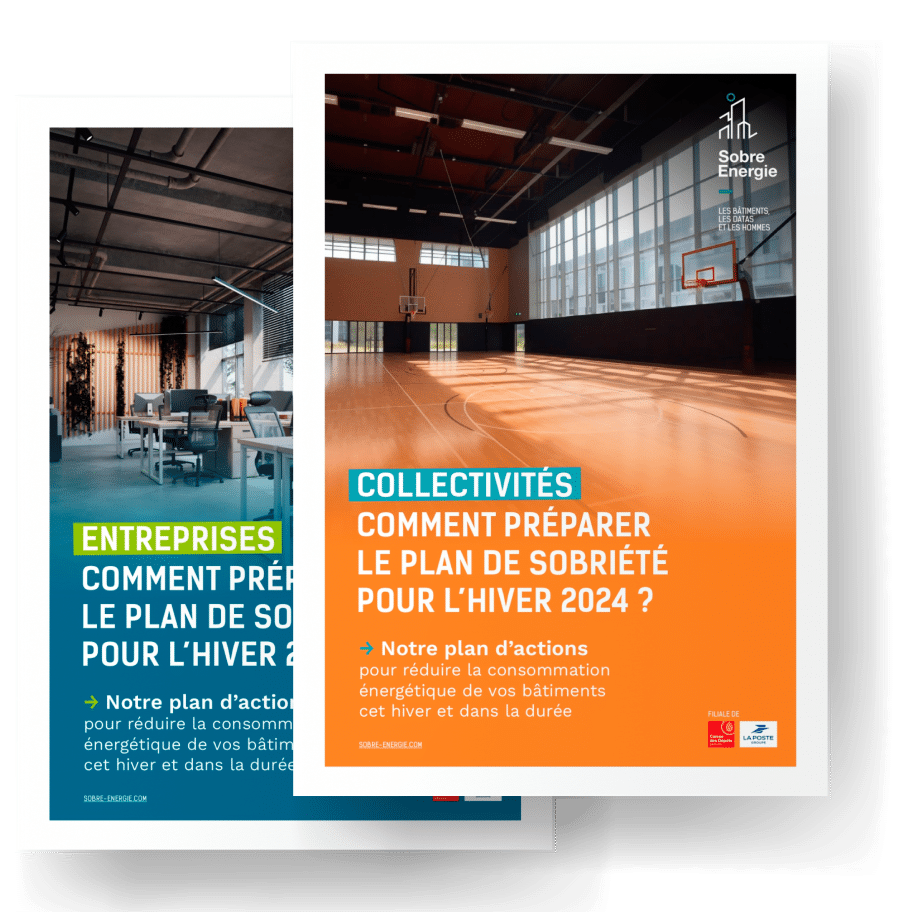“The sobriety plan is a management issue”
The Energy Sobriety Plan is still relevant for a second consecutive winter, as a new meeting point for businesses and communities. Rather than an obstacle to overcome every year, Ayrald Berthod (President of Sobre Energie) invites decision-makers to make it a springboard towards lasting sobriety.
Hello Ayrald. To begin with, who is affected by The Sobriety Plan? From what size of company or community is there a challenge in managing its energy consumption?
For two years, it has concerned absolutely everyone. We heard again this summer that the price of KWh was not going to collapse in the near future, so no one escapes the question of the price of energy.
“Energy has become a “core business” expense line for all types of businesses. »
Last year, many examples were given of manufacturers for whom energy management is at the heart of their production plan, but in fact energy has become a “core business” line of expenditure for all types of businesses and even for communities. The bill is too high in an office building not to use it as a savings lever. And the gradual elimination of the tariff shield started at the beginning of August will not help anything.
Once we have addressed the financial question, there is also the societal problem. Establishing a Sobriety Plan plan in your organization means taking responsibility from an environmental point of view. And no one is cutting that either.
The Sobriety Plan is very concrete instructions and actions dictated by the government to get through the winter. But at the end of the season, how do we make sobriety sustainable?
What makes it sustainable is the mobilization of women and men. It is good to start mobilization during the winter because energy shortages and set temperatures are very telling subjects, but we must take advantage of this to acculturate the stakeholders. There is no miraculous recipe, the sobriety plan is a management issue.
“A building that is not comfortable is often a faulty BMS and therefore overconsumption. »
On the one hand, we must raise awareness among the occupants and on the other hand, train the people responsible for the technical operation of the buildings. “Facility Management” professions will have to evolve quickly to integrate these sobriety issues.
I would add a third aspect: the re-configuration of the GTB (Technical Building Management). A building that is not comfortable is often a faulty BMS and therefore overconsumption.
With these three aspects, we have a sobriety plan with a rapid ROI which allows us to save KWh. We simply take the building in the state it is in, but we manage it in an exemplary manner.
What is the biggest obstacle to energy sobriety for businesses and communities? Lack of time? Means? Skills?
We have a real problem with individual commitment. The KWh as we pay it for an individual has nothing to do with the KWh paid by companies and it is the responsibility of managers to make it a central subject. It’s up to organizations to get their employees on board.
Ideally, energy efficiency should be integrated into managers' objectives. By teams, by buildings, by services... This is already done in certain companies, it should become more widespread. These are mechanisms that have already been used to accelerate parity in teams, why not with the subject of sobriety?
Digitalization has revolutionized many aspects of business life: we use SaaS for accounting, HR, CRM, etc. Sobre suggests doing the same thing for the sobriety of buildings. How can digitalization help meet this challenge?
The information around energy sobriety is quite daunting: looking at a load curve is the stuff of technicians and it doesn't interest many people. Thanks to our digital platform, at Sobre, we transform this technical data into visual and intuitive information.
“We start from data to tell a story. »
We start from data to tell a story. We seek to interest stakeholders with simple indicators and objectives that speak to them.
The digital platform is also a centralized management tool. We can follow actions and control tasks, we can trace the evolution of consumption.
It is also a centralized space to generate employee engagement. You can organize competitions or fun activities related to energy sobriety there.
Will energy management be an integral part of the daily lives of businesses and communities in the near future? Can we do without a National Sobriety Plan?
We must be patient even if there is an emergency, we are on generational work. The seat belt seems essential to us today but it took time to become natural. We experienced a big boost with the energy crisis, but sobriety is a job of small, successive steps and perseverance.
We have also received very encouraging feedback from our customers. La Poste has succeeded in deploying its sobriety approach across its 10,000 buildings in 2 years with a reduction of more than 60 MWh as a result.
The advantage is that sobriety is achieved building by building. Whatever the size of an organization, the challenge remains the same: you have to work on each unit locally and everyone can tackle it. It is a project that nourishes the company's values.
